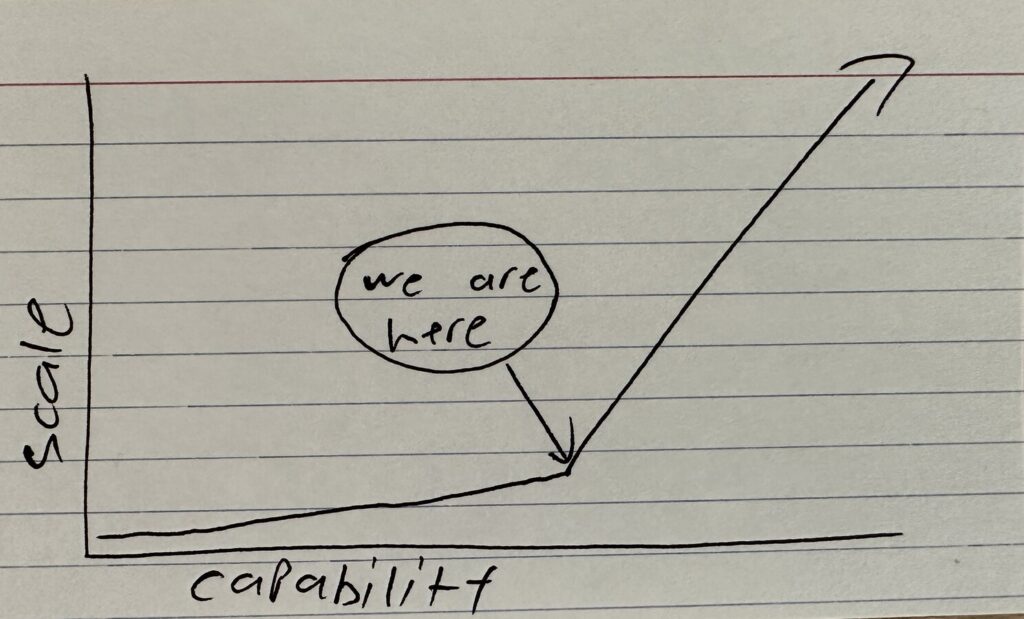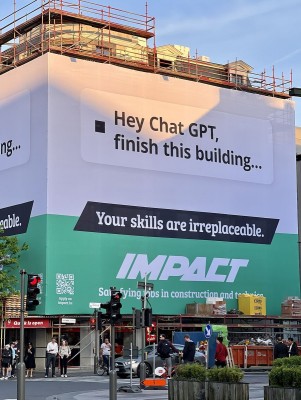This post first appeared for premium subscribers of Great Leadership on Substack and was published on June 9, 2023. If you want to get access to exclusive articles like this one and weekly 5 min leadership tips, then make sure to become a premium subscriber and get all of my best content and latest thinking delivered to your inbox. Learn more and sign up here. Premium subscribers get content like this every week.
…
In today’s world, the rise of artificial intelligence (AI) has initiated a significant paradigm shift in our workforce. Since the dawn of the digital age, the threat of machines replacing humans in various jobs has remained a hot topic. IBM’s Watson, for instance, brought this conversation into the spotlight but seems to have faded into the backdrop of the AI narrative. Nevertheless, this transformational change in our society, primarily fueled by AI, is more complex and less linear than previously thought.
AI, in many ways, is proving to be an asset rather than a direct threat to our employment landscape. Many leaders and decision-makers, including CEOs and CHROs, have expressed optimism that AI and other technological advancements will primarily automate the mundane facets of work, allowing us to focus on more ‘human’ aspects of our jobs, including creativity, problem-solving, and relationship building.
Sounds good right?
But what happens when AI comes for those “human” jobs as well?
-
Decades ago, when bank kiosks were introduced we were told it would be the end of bank tellers but instead we saw a rise of local branches and an increase of the number of tellers.
-
A few years ago when Accenture automated over 17,000 jobs they didn’t replace a single person, instead they up-skilled them.
-
When I interviewed the CHRO of McDonald’s after they were introducing kiosks, he told me that they were not reducing headcount but instead were keeping it the same and in some cases increasing it to focus more on customer experience. In a recent conversation I had with the chief restaurant officer of Chipotle he told me the same thing.
I have had countless conversations which went along the “yes we are using technology but it won’t replace humans” lines. At least, up until recently.
Now with the rise of ChatGPT and the further advancements in technology, we are once again reviving these conversations around AI and how it will take away jobs. But is it really different this time?
Yes…it is.
In the past, the discussions around AI and jobs have primarily focused on either blue collar workers or workers who were lower wage and considered lower skilled. These were workers who had jobs which were repetitive and mundane in nature.
But this time AI has the potential to disrupt white collar workers as well (even more so!) as this article written in The Atlantic also points out as does this one from the WSJ which points out that companies are also reducing the number of management layers they have.
This time it’s different for two main reasons which are capability and scale. Capability refers to the types of things that AI is now able to do and scale refers to how many people now have access to it for free or at low cost.

Capability
An entire book could be written about what AI can now do today. But this includes everything from writing in-depth articles and doing research, reviewing website code for errors, answering questions about any topic, advising leaders on making strategic decisions, designing images and handling graphic design (in fact any kind of content creation), market research and data analytics, giving medical advice and recommendations, and the list goes on and on. To give you a simple yet practical example. I used to have a content writer on my team who would turn my podcast transcripts into article summaries that would highlight key points, that is now done with ChatGPT. My web developer is now able to take code that he writes input into ChatGPT and convert the code into another language while also scanning for any errors.
Part of what is enhancing the capability isn’t just the advancement of the technology itself but the fact that tools like ChatGPT are being used as platforms that developers can build on top of. For example ChatGPT can’t read links so a plugin was developed that allows it to read content on something like a Google doc. ChatGPT also wasn’t able to provide information past the year 2021 so a plugin was developed to correct that.
My wife was recently at Starbucks and she overheard a few middle school girls talking about how they are using AI to write papers and get help with test preparation. The capability has skyrocketed!
The point is that ChatGPT is now able to do quite a few jobs that were previously thought of as safe for humans.
…
There are 10 specific ways that ChatGPT can help you become a better leader. These include things like professional development, communication, enhanced decision making support, & culture and team building. I put together a course that walks you through these 10 things in detail and how to use ChatGPT for each one, including a screen-share walk through. If you want to learn how to use ChatGPT to be a better leader, then I encourage you to sign up for the course here.

…
Scale
Within two months of launching ChatGPT had over 100 million active users making it the fastest growing consumer application in history (it took TikTok 9 months to get to similar levels and Instagram 2.5 years). Previously if you wanted access to something like this you’d have to pay a relatively hefty monthly fee but ChatGPT was released completely for free with a premium version available. So not only is the capability unlike anything we have ever seen but it’s now being used by anyone and everyone. If you have access to the internet, you can use it. These tools are now being integrated into other applications we use, for example Photoshop, internet browsing, Zoom calls, etc. Platforms like ChatGPT are powerful as standalone applications but imagine having something like that integrated into almost all aspects of your technology routine ranging from the music you listen to, to the workout classes you take, to the virtual calls you have, and even to advanced home automation. The next few years will really show the integration and scale of these platforms especially as they get added into hardware and get a voice.
Of course there are still lots of things that AI and ChatGPT can’t do and the clever ad below takes aim at that.

There’s still plenty of room for things like human decision making, creativity, innovation, leadership, and relationship building. However, those of us in areas where our work can be augmented by AI should be thinking about how we can work with AI to do our jobs better. For example, if you’re a writer, how can you master ChatGPT to provide the best prompts and content to enhance the content you write? If you’re a leader, can you solicit the advice of ChatGPT to learn from the wisdom and experience of others leaders when preparing to have a tough conversation with an employee?
There are of course plenty of downsides here as well such as using AI that is programmed by humans who have inherent biases, the spread of fake information or deepfake content, creating digital divides, etc.
Indeed, AI is transforming the way we work and live, enhancing our capabilities and expanding our potential. However, its advancement also requires us to continuously learn, adapt, and upskill to stay relevant in this rapidly evolving digital world. As we navigate this AI-driven time, we need to ensure that we wield these powerful tools responsibly and ethically, harnessing their potential to enrich human lives while mitigating any adverse impacts. In the grand scheme of things, it’s clear that AI is more of a partner than a replacement—a partner that is here to stay. Therefore, as we continue this extraordinary journey with AI, it is crucial to foster a symbiotic relationship where humans and AI collaborate, each bringing their unique strengths to the table, for a future that is not just technologically advanced but also humane and inclusive.
Yes, this time it is different. How different?
That remains to be seen.
…
Get access to more content like this by becoming a premium subscriber on Substack where each week you will get these types of articles delivered to your inbox along with other content.

Comments